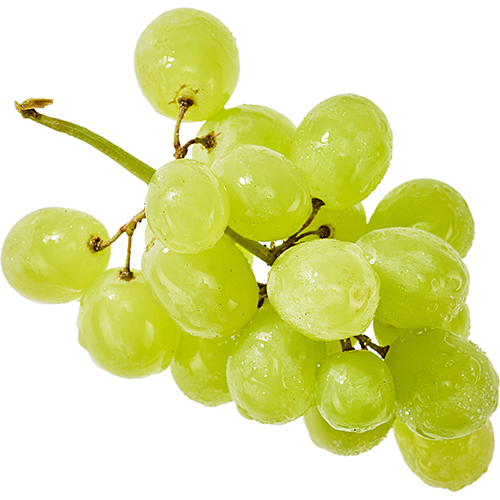white grapes



An especially sweet fruit which is actually virtually fat-free but contains a high proportion of fructose
Have a high vitamin B6 and folic acid content
Composed of up to c. 80% water
Rich in iron, also used as a treatment for anaemia
An especially sweet fruit which is actually virtually fat-free but contains a high proportion of fructose
Have a high vitamin B6 and folic acid content
Composed of up to c. 80% water
Rich in iron, also used as a treatment for anaemia
Origin
Italy

Harvest time

Fillings


Information
Grapevines are exceptionally old plants. As far back as 130 million years ago earlier forms of the wild grapevine had spread as far as Greenland, but they originally came from the South Caucasus and Central Asia. The grapevine was cultivated 5,000 years ago in Ancient Egypt and was mainly used to produce wine. Later, the Greeks and Romans continued to cultivate it as they, too, valued the finer things in life.
Today, there are cultivation regions in all temperate and, in some cases, subtropical zones on Earth as the sweet taste develops particularly well in mild, warm climates. Grapes are one of the top-selling types of fruit: they rank in second place – after citrus fruits but ahead of bananas and apples. The annual global harvesting of grapes amounts to between 50 and 60 million tons. The majority (85%) is used for wine, sparkling wine and juice production, 10% are table grapes, and the remaining 5% are dried and sold as raisins (currants/sultanas/raisins).
Today, there are cultivation regions in all temperate and, in some cases, subtropical zones on Earth as the sweet taste develops particularly well in mild, warm climates. Grapes are one of the top-selling types of fruit: they rank in second place – after citrus fruits but ahead of bananas and apples. The annual global harvesting of grapes amounts to between 50 and 60 million tons. The majority (85%) is used for wine, sparkling wine and juice production, 10% are table grapes, and the remaining 5% are dried and sold as raisins (currants/sultanas/raisins).
Good to know
- The body can absorb vitamins and minerals more quickly from juice than from the fresh fruit itself
- Single-origin juice and wine can be produced
- Completely healthy grapes are processed for the production of grape juice
Quality
- Bio
- Convention
